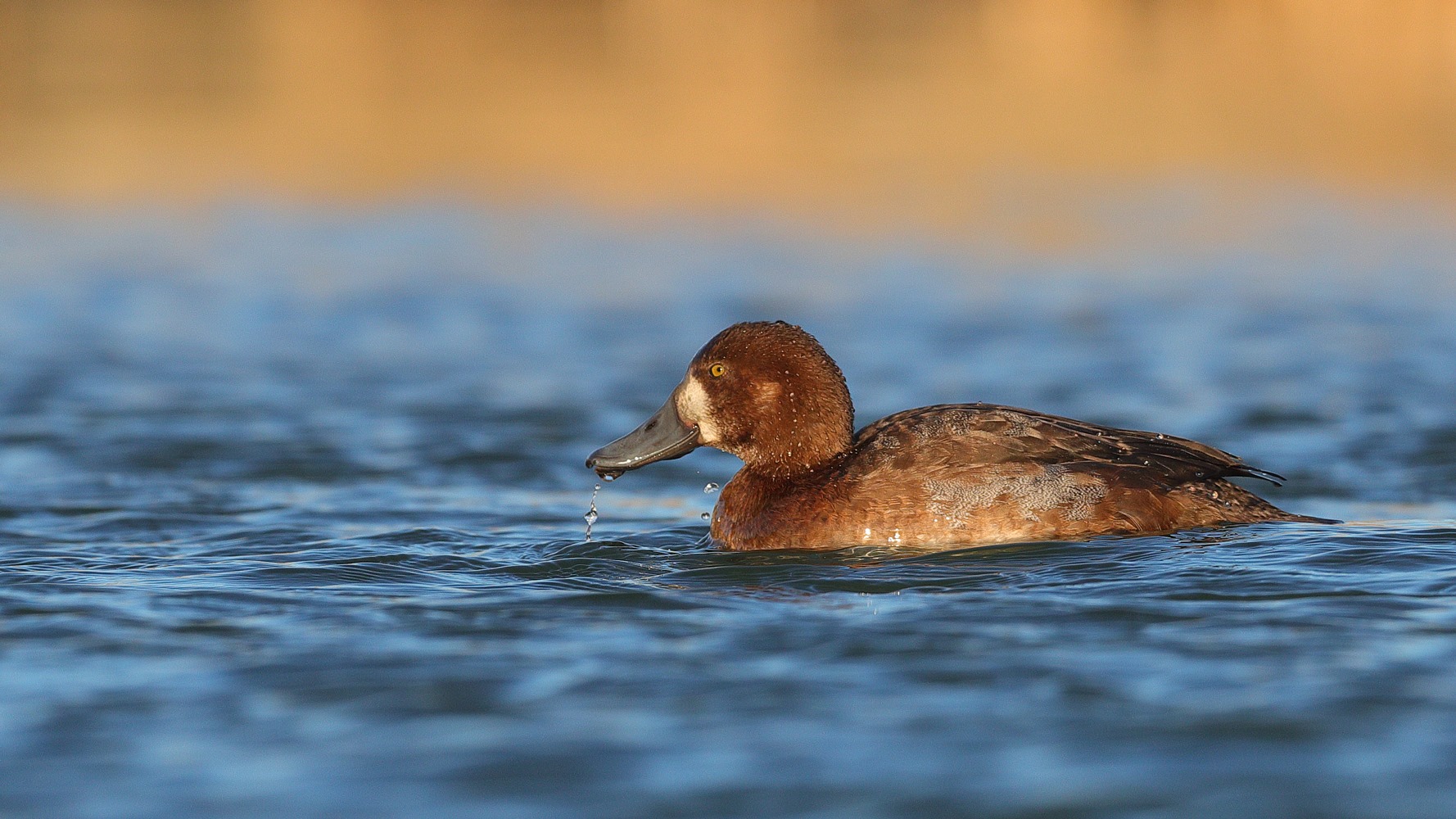Greater scaup
Greater scaup (female). Photo: Kilvar Kessler
Introduction
Latin Aythya marila
Estonian Merivart
Also known as: scaup, bluebill
Status in Estonia
A rare breeding bird, a common migratory and wintering bird.
Description
The greater scaup is a diving duck with a huge round head and a drooping back when swimming. The male bird’s definitive plumage includes a black head with a green sheen, yellow eyes, a black breast and back, white sides, a greyish-white back with subtle grey striping, a light grey beak with a black nail. During flight, a light back and clear white wing streak are evident. The front edge of the wing is grey and striped on the top side. The female bird is dull brown with light brownish grey sides and a somewhat darker back. There is a distinct broad white ‘ring’ around the beak. In late spring or summer, there is a noticeable lighter spot in the ear area. The male bird in eclipse plumage has a brownish head, chest and back, with a small amount of white on the base of its beak.
Size
Body length 42–51 cm, wingspan 71–80 cm, body mass 860–900 g.
Similar species
Tufted duck.
Distribution
It breeds primarily in the tundra regions of North Eurasia and America. The Malozemel’skaya tundra and the Yugorsky Peninsula are Europe’s most important breeding sites. It breeds in large numbers also in Iceland and Fennoscandia. The population of Baltic Sea islands is currently dwindling. Birds from the Northwest European population winter in the West and North seas as well as the Netherlands, and in colder months, on the shores of France and the British Isles. The greater scaup is an occasional breeder in Estonia.
Population
Estonia has 5–10 breeding pairs.
Occurrence in Estonia
It arrives in late March/early April. Its numbers during spring migration peak in early May. There are fewer stopovers during the autumn migration, which lasts from mid-August to the beginning of November, followed by a huge migration from mid-September to the end of October. The greater scaup is becoming a more common wintering bird in Estonian waters, with an estimated population of 300–3500 individuals.
Diet
It eats more animal food at sea, such as mussels, molluscs, crustaceans and bristle worms, than it does in lakes, where they eat insects and their larvae. During harder times, it eats seaweed and other algae as well as aquatic plant shoots and seeds.
Habitat
It breeds on small open sea islands.
Nesting
Greater scaups usually build their nests in grass or under shrubs. Females lay 7–11 eggs at the end of May, incubating them alone for 27–28 days. After 40–45 days, the chicks learn to fly and reach sexual maturity at the age of two.
Conservation status and protection
It belongs to the protected species of category II. The decline in the Baltic Sea breeding population is attributed to the disappearance of large black-headed gull colonies and increased predators on the islands.
Distribution and population in Lääne County.
The greater scaup is a common migratory bird in Lääne County. They are best to observe in the spring, from April until mid-May, when tens of thousands of birds flock to Väinameri to feed. The best place to see greater scaups on Lääne County is from Cape Puise, where over 40,000 birds have been recorded stopping around the peninsula.
During the autumn migration, greater scaups have smaller stopping flocks in Lääne County, although a large migration can be seen in September near Cape Põõsaspea.
